Richard Zhang
Identifying Prompted Artist Names from Generated Images
Jul 24, 2025Abstract:A common and controversial use of text-to-image models is to generate pictures by explicitly naming artists, such as "in the style of Greg Rutkowski". We introduce a benchmark for prompted-artist recognition: predicting which artist names were invoked in the prompt from the image alone. The dataset contains 1.95M images covering 110 artists and spans four generalization settings: held-out artists, increasing prompt complexity, multiple-artist prompts, and different text-to-image models. We evaluate feature similarity baselines, contrastive style descriptors, data attribution methods, supervised classifiers, and few-shot prototypical networks. Generalization patterns vary: supervised and few-shot models excel on seen artists and complex prompts, whereas style descriptors transfer better when the artist's style is pronounced; multi-artist prompts remain the most challenging. Our benchmark reveals substantial headroom and provides a public testbed to advance the responsible moderation of text-to-image models. We release the dataset and benchmark to foster further research: https://graceduansu.github.io/IdentifyingPromptedArtists/
Long-Context State-Space Video World Models
May 26, 2025Abstract:Video diffusion models have recently shown promise for world modeling through autoregressive frame prediction conditioned on actions. However, they struggle to maintain long-term memory due to the high computational cost associated with processing extended sequences in attention layers. To overcome this limitation, we propose a novel architecture leveraging state-space models (SSMs) to extend temporal memory without compromising computational efficiency. Unlike previous approaches that retrofit SSMs for non-causal vision tasks, our method fully exploits the inherent advantages of SSMs in causal sequence modeling. Central to our design is a block-wise SSM scanning scheme, which strategically trades off spatial consistency for extended temporal memory, combined with dense local attention to ensure coherence between consecutive frames. We evaluate the long-term memory capabilities of our model through spatial retrieval and reasoning tasks over extended horizons. Experiments on Memory Maze and Minecraft datasets demonstrate that our approach surpasses baselines in preserving long-range memory, while maintaining practical inference speeds suitable for interactive applications.
SliderSpace: Decomposing the Visual Capabilities of Diffusion Models
Feb 03, 2025Abstract:We present SliderSpace, a framework for automatically decomposing the visual capabilities of diffusion models into controllable and human-understandable directions. Unlike existing control methods that require a user to specify attributes for each edit direction individually, SliderSpace discovers multiple interpretable and diverse directions simultaneously from a single text prompt. Each direction is trained as a low-rank adaptor, enabling compositional control and the discovery of surprising possibilities in the model's latent space. Through extensive experiments on state-of-the-art diffusion models, we demonstrate SliderSpace's effectiveness across three applications: concept decomposition, artistic style exploration, and diversity enhancement. Our quantitative evaluation shows that SliderSpace-discovered directions decompose the visual structure of model's knowledge effectively, offering insights into the latent capabilities encoded within diffusion models. User studies further validate that our method produces more diverse and useful variations compared to baselines. Our code, data and trained weights are available at https://sliderspace.baulab.info
What Makes for a Good Stereoscopic Image?
Dec 30, 2024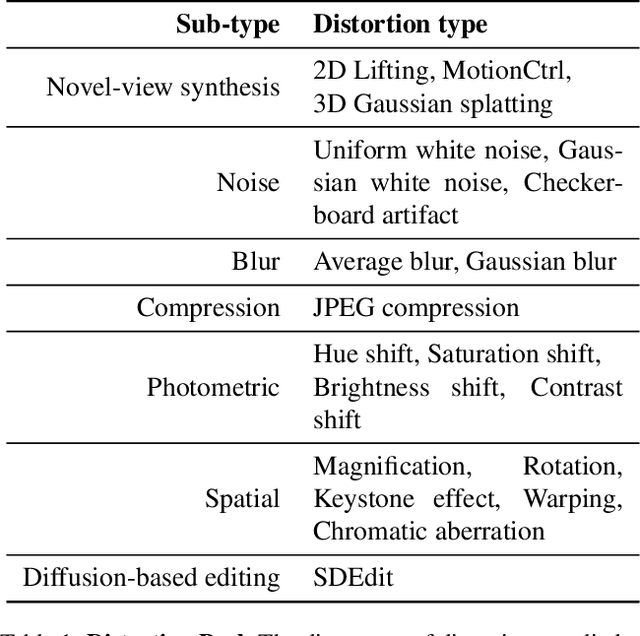
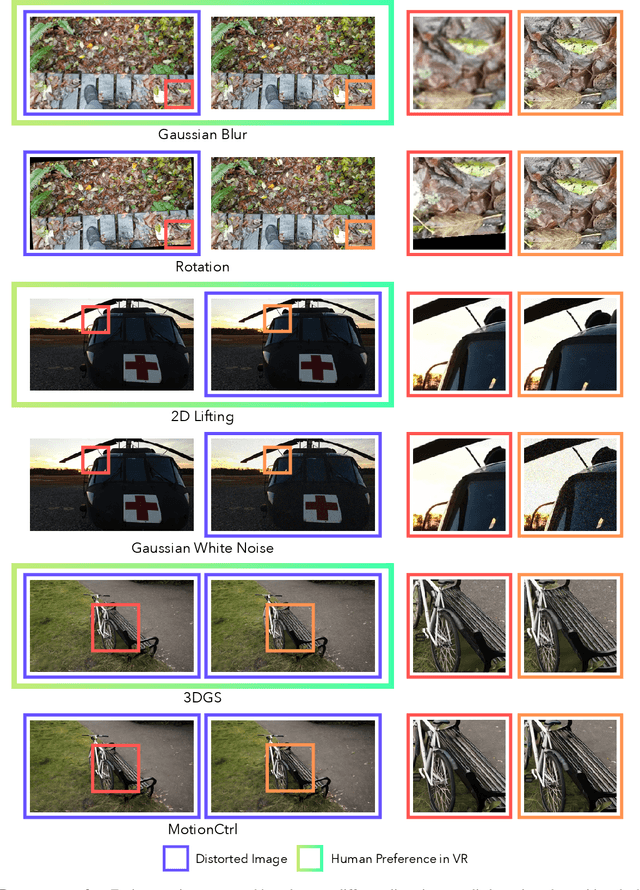
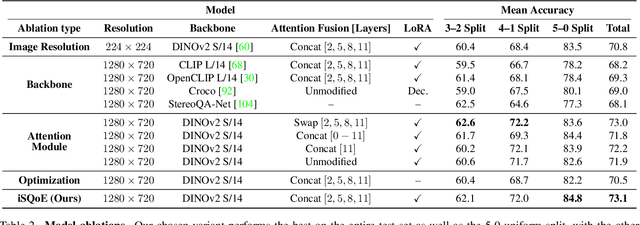
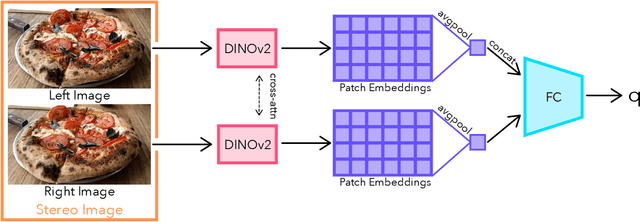
Abstract:With rapid advancements in virtual reality (VR) headsets, effectively measuring stereoscopic quality of experience (SQoE) has become essential for delivering immersive and comfortable 3D experiences. However, most existing stereo metrics focus on isolated aspects of the viewing experience such as visual discomfort or image quality, and have traditionally faced data limitations. To address these gaps, we present SCOPE (Stereoscopic COntent Preference Evaluation), a new dataset comprised of real and synthetic stereoscopic images featuring a wide range of common perceptual distortions and artifacts. The dataset is labeled with preference annotations collected on a VR headset, with our findings indicating a notable degree of consistency in user preferences across different headsets. Additionally, we present iSQoE, a new model for stereo quality of experience assessment trained on our dataset. We show that iSQoE aligns better with human preferences than existing methods when comparing mono-to-stereo conversion methods.
From Slow Bidirectional to Fast Causal Video Generators
Dec 10, 2024



Abstract:Current video diffusion models achieve impressive generation quality but struggle in interactive applications due to bidirectional attention dependencies. The generation of a single frame requires the model to process the entire sequence, including the future. We address this limitation by adapting a pretrained bidirectional diffusion transformer to a causal transformer that generates frames on-the-fly. To further reduce latency, we extend distribution matching distillation (DMD) to videos, distilling 50-step diffusion model into a 4-step generator. To enable stable and high-quality distillation, we introduce a student initialization scheme based on teacher's ODE trajectories, as well as an asymmetric distillation strategy that supervises a causal student model with a bidirectional teacher. This approach effectively mitigates error accumulation in autoregressive generation, allowing long-duration video synthesis despite training on short clips. Our model supports fast streaming generation of high quality videos at 9.4 FPS on a single GPU thanks to KV caching. Our approach also enables streaming video-to-video translation, image-to-video, and dynamic prompting in a zero-shot manner. We will release the code based on an open-source model in the future.
TurboEdit: Instant text-based image editing
Aug 14, 2024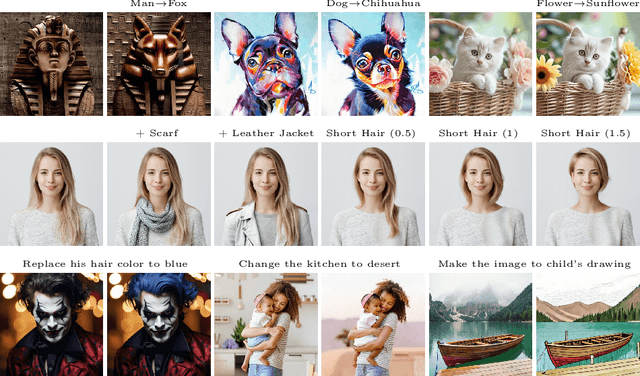
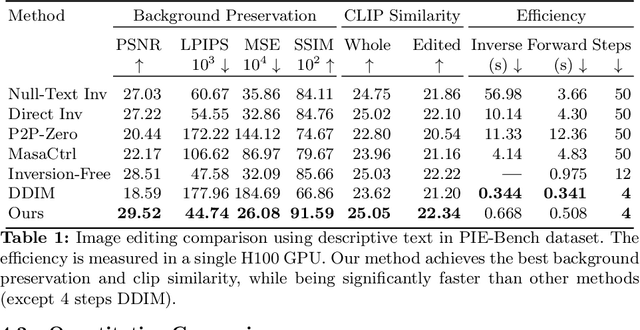
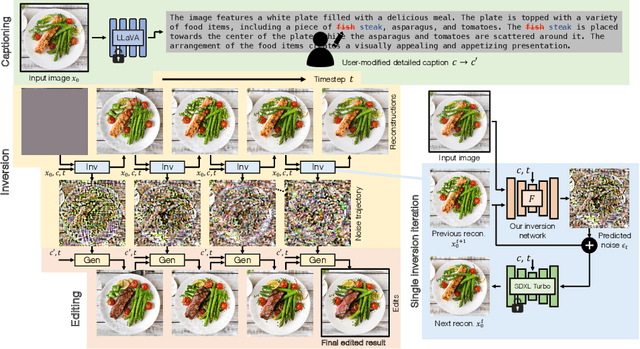

Abstract:We address the challenges of precise image inversion and disentangled image editing in the context of few-step diffusion models. We introduce an encoder based iterative inversion technique. The inversion network is conditioned on the input image and the reconstructed image from the previous step, allowing for correction of the next reconstruction towards the input image. We demonstrate that disentangled controls can be easily achieved in the few-step diffusion model by conditioning on an (automatically generated) detailed text prompt. To manipulate the inverted image, we freeze the noise maps and modify one attribute in the text prompt (either manually or via instruction based editing driven by an LLM), resulting in the generation of a new image similar to the input image with only one attribute changed. It can further control the editing strength and accept instructive text prompt. Our approach facilitates realistic text-guided image edits in real-time, requiring only 8 number of functional evaluations (NFEs) in inversion (one-time cost) and 4 NFEs per edit. Our method is not only fast, but also significantly outperforms state-of-the-art multi-step diffusion editing techniques.
Data Attribution for Text-to-Image Models by Unlearning Synthesized Images
Jun 13, 2024Abstract:The goal of data attribution for text-to-image models is to identify the training images that most influence the generation of a new image. We can define "influence" by saying that, for a given output, if a model is retrained from scratch without that output's most influential images, the model should then fail to generate that output image. Unfortunately, directly searching for these influential images is computationally infeasible, since it would require repeatedly retraining from scratch. We propose a new approach that efficiently identifies highly-influential images. Specifically, we simulate unlearning the synthesized image, proposing a method to increase the training loss on the output image, without catastrophic forgetting of other, unrelated concepts. Then, we find training images that are forgotten by proxy, identifying ones with significant loss deviations after the unlearning process, and label these as influential. We evaluate our method with a computationally intensive but "gold-standard" retraining from scratch and demonstrate our method's advantages over previous methods.
Image Neural Field Diffusion Models
Jun 11, 2024



Abstract:Diffusion models have shown an impressive ability to model complex data distributions, with several key advantages over GANs, such as stable training, better coverage of the training distribution's modes, and the ability to solve inverse problems without extra training. However, most diffusion models learn the distribution of fixed-resolution images. We propose to learn the distribution of continuous images by training diffusion models on image neural fields, which can be rendered at any resolution, and show its advantages over fixed-resolution models. To achieve this, a key challenge is to obtain a latent space that represents photorealistic image neural fields. We propose a simple and effective method, inspired by several recent techniques but with key changes to make the image neural fields photorealistic. Our method can be used to convert existing latent diffusion autoencoders into image neural field autoencoders. We show that image neural field diffusion models can be trained using mixed-resolution image datasets, outperform fixed-resolution diffusion models followed by super-resolution models, and can solve inverse problems with conditions applied at different scales efficiently.
Improved Distribution Matching Distillation for Fast Image Synthesis
May 23, 2024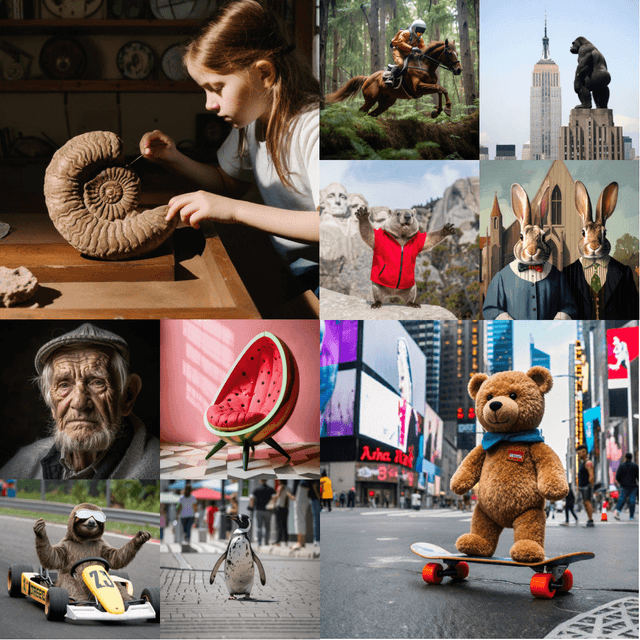
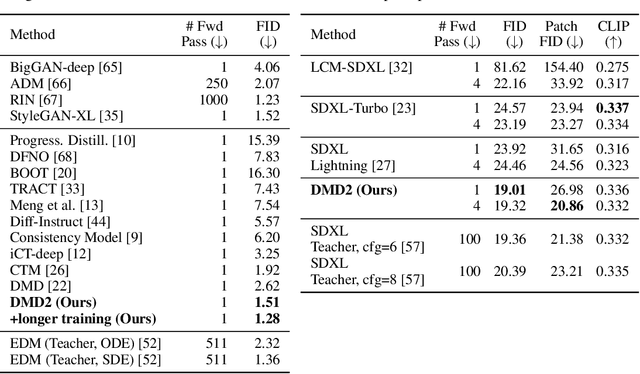
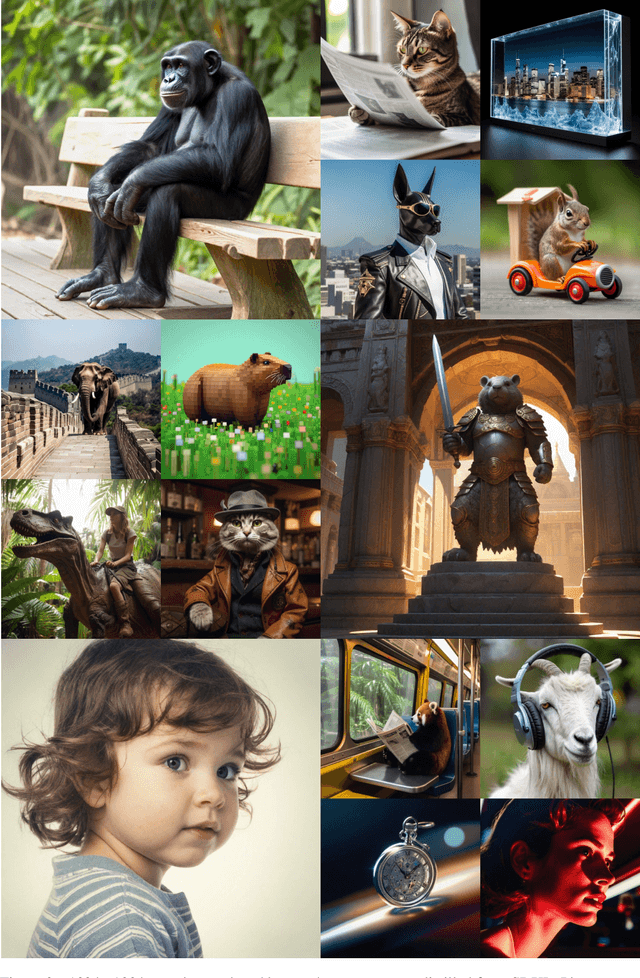

Abstract:Recent approaches have shown promises distilling diffusion models into efficient one-step generators. Among them, Distribution Matching Distillation (DMD) produces one-step generators that match their teacher in distribution, without enforcing a one-to-one correspondence with the sampling trajectories of their teachers. However, to ensure stable training, DMD requires an additional regression loss computed using a large set of noise-image pairs generated by the teacher with many steps of a deterministic sampler. This is costly for large-scale text-to-image synthesis and limits the student's quality, tying it too closely to the teacher's original sampling paths. We introduce DMD2, a set of techniques that lift this limitation and improve DMD training. First, we eliminate the regression loss and the need for expensive dataset construction. We show that the resulting instability is due to the fake critic not estimating the distribution of generated samples accurately and propose a two time-scale update rule as a remedy. Second, we integrate a GAN loss into the distillation procedure, discriminating between generated samples and real images. This lets us train the student model on real data, mitigating the imperfect real score estimation from the teacher model, and enhancing quality. Lastly, we modify the training procedure to enable multi-step sampling. We identify and address the training-inference input mismatch problem in this setting, by simulating inference-time generator samples during training time. Taken together, our improvements set new benchmarks in one-step image generation, with FID scores of 1.28 on ImageNet-64x64 and 8.35 on zero-shot COCO 2014, surpassing the original teacher despite a 500X reduction in inference cost. Further, we show our approach can generate megapixel images by distilling SDXL, demonstrating exceptional visual quality among few-step methods.
Personalized Residuals for Concept-Driven Text-to-Image Generation
May 21, 2024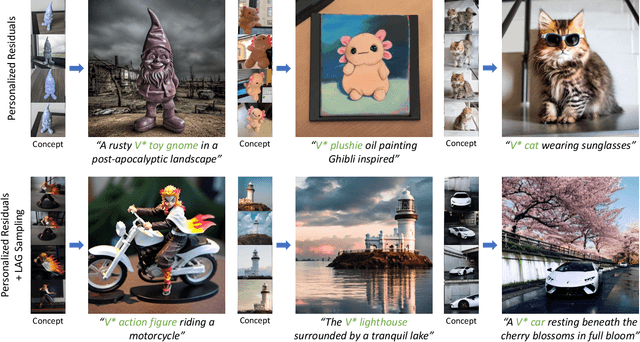

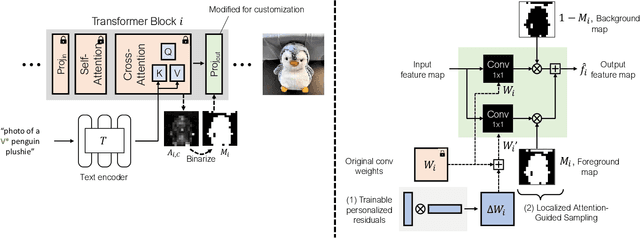

Abstract:We present personalized residuals and localized attention-guided sampling for efficient concept-driven generation using text-to-image diffusion models. Our method first represents concepts by freezing the weights of a pretrained text-conditioned diffusion model and learning low-rank residuals for a small subset of the model's layers. The residual-based approach then directly enables application of our proposed sampling technique, which applies the learned residuals only in areas where the concept is localized via cross-attention and applies the original diffusion weights in all other regions. Localized sampling therefore combines the learned identity of the concept with the existing generative prior of the underlying diffusion model. We show that personalized residuals effectively capture the identity of a concept in ~3 minutes on a single GPU without the use of regularization images and with fewer parameters than previous models, and localized sampling allows using the original model as strong prior for large parts of the image.
 Add to Chrome
Add to Chrome Add to Firefox
Add to Firefox Add to Edge
Add to Edge